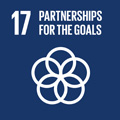- Docente: Cristiana Corsi
- Credits: 9
- SSD: ING-INF/06
- Language: English
- Teaching Mode: Traditional lectures
- Campus: Cesena
- Corso: Second cycle degree programme (LM) in Biomedical Engineering (cod. 9266)
-
from Feb 17, 2025 to Jun 09, 2025
Learning outcomes
The course provides students with knowledge concerning the main challenges in medical imaging; students achieve a comprehensive understanding of the use of imaging technologies in a clinical setting and develop the ability to extract clinical information from medical image analysis, to support patient diagnosis and therapy. More specifically, the student: - knows how to choose the most suitable medical imaging acquisition systems and their use in clinics; - is aware of both classic computer vision approaches and innovative and emerging methodologies aimed at biomedical image processing; - knows a large number of methodologies to devise, develop and implement solutions to clinical questions which require medical image processing; - is able to perform critical assessments of the most appropriate processing techniques to solve specific clinical problems; - is able to interpret the results of image processing-based data analysis for applications in clinics; - knows how to interact with both producers and users of medical image processing software, in order to obtain indications for the design and implementation of innovative solutions in the biomedical field.
Course contents
Digital bio-images: acquisition, storage, analysis
Classical methods for image processing (arithmetic, histogram and point operations, equalization, contrast enhancement, increase/reduction of dynamic range, cumulative histogram. Filtering linear/non-linear smoothing/sharpening in the spatial/frequency domain, morphological operators. Object segmentation: fixed and adaptive thresholding, Hough transform, split and merge, region growing, watershed)
Innovative techniques based on evolution equations for filtering and segmentation of bioimages in 2D, 3D and 3D + time (deformable models, statistical shape models)
Classification and clustering techniques (K-means, expectation maximization, mean-shift, KNN, ...)
Machine learning and deep learning for bio-image segmentation and classification
Techniques for bio-images registration (rigid and affine, non-rigid)
Tracking techniques (block matching and optical flow)
Visualization of 3D medical data: MIP, MPR, Surface rendering and Volume rendering
Introduction to statistical analysis applied in the bio-image processing field
The programme will be integrated on a weekly basis by laboratory exercises in which the techniques discussed in the theoretical lectures will be implemented and applied to cases of real interest.
Seminar lectures will be held on specific topics by experts in the field.
Readings/Bibliography
Handouts and materials provided by the teacher.
Reading the reference scientific articles that will be provided by the teacher on specific topic for an in-depth approach is recommended.
Digital Image Processing Using MATLAB. Gonzalez, Rafael C., Woods, Richard E. Pearson Prentice Hall
Teaching methods
The first two lessons of each week are devoted to the theoretical part with classroom explanations. Each theoretical topic will be immediately accompanied by at least one exercise in the third weekly lesson, which will take place in the laboratory. The student will therefore not only acquire the theoretical skills but will also be able to implement and use the techniques in case studies highlighting meaningful applications.
Assessment methods
During the course anonymous questionnaires will be administered through web applications to monitor the level of comprehension of the contents in real time and eventually carry out remodulations.
Final oral interview. The final grade is based on the preparation exhibited by the student on the theoretical part and on exercises carried out during the course. The solution of two assignments is due at least two days before the date of the examination; these solutions will be commented and discussed during the interview.
Student's ability to illustrate the content covered during the course, also performing comparative evaluations between the different methodologies will be evaluated as well as the capability to solve new problems related to biomedical image processing. Language skills, clarity of presentation, level of detail will be an integral part of the evaluation.
Teaching tools
Notebook, projector, computer lab.
Office hours
See the website of Cristiana Corsi
SDGs



This teaching activity contributes to the achievement of the Sustainable Development Goals of the UN 2030 Agenda.
